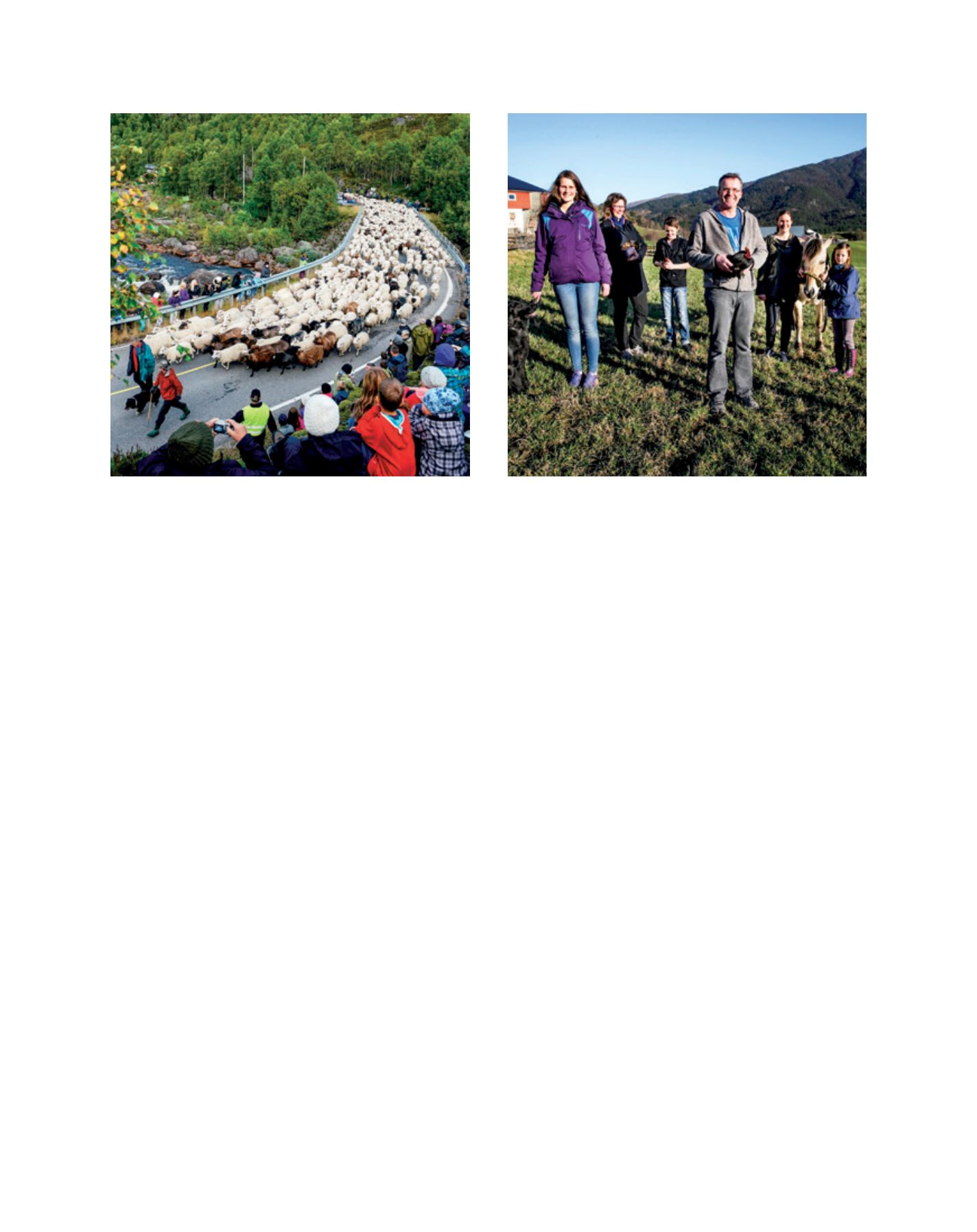

[
] 68
atives is high. In the dairy sector more than 90 per cent of the milk
produced is delivered to the cooperative. For meat, eggs and grain
it is 60-70 per cent, and for vegetables approximately 50 per cent.
The cooperatives also have a role in implementing agricultural
policies. They secure the best possible price for the farmers’ prod-
ucts within the negotiated target price. The cooperatives are also
obliged to collect products from non-members if they ask. This
secures access to the market for family farmers across the country.
On the other hand, farmers do have some exemptions from
ordinary competition rules. Firstly, the farmers are allowed to
cooperate in the market through their cooperatives. Secondly,
the cooperatives are allowed to have a high market share
because of their role in implementing agricultural policy. At
the same time, the authorities have tools to make sure the
cooperatives are not misusing their position.
The ordinary food market in Norway is well organized.
Many consumers are now asking for local and special prod-
ucts. Thus, some family farmers have started refining their
own products for direct sale to consumers on the farm, or
at farmers’ markets. This gives an opportunity to keep more
of the value added for the family on the farm. Most of these
farmers are still members of the cooperative, which supports
their local activity. The cooperatives were deeply involved in
the formation of farmers’ markets in Norway.
Local products from the farm will not replace ordinary prod-
ucts from the cooperatives and other food industries in the
grocery stores. However, they are a very important supplement
for consumers and some farmers. They also provide an impor-
tant arena for direct contact between farmers and consumers.
Supporting rural communities
In many rural areas, the agricultural activity performed by
family farmers is the backbone of the community regard-
ing settlement, economy, employment and social activity.
Agricultural production must take place where the land is.
The farmer and his family are therefore more than any other
activity linked to the community where the farm is located.
The farmer boosts the local economy by his production
and activity, but also indirectly by using local industry and
services for his business and private life. Many other jobs in
the community depend on family farms. The activity of one
family farmer creates two to three further jobs.
In addition to their ordinary agricultural activity, many
farmers provide different kinds of services both on the farm
and outside it. This is also important for the community and
the well-being of the residents.
The future of Norway’s family farms
Family-based ownership of farms has a very long tradition in
Norway, and current legislation is strengthening this tradi-
tion. However, some political parties aim to change this and
liberalize the market for farm properties. This will also open
up opportunities for companies to buy farms, and the buyer
will have fewer obligations. A possible change in legislation
will probably not have a very strong impact immediately, but
in a longer perspective it may challenge the family farm struc-
ture, especially in the best agricultural areas.
The next question is, will the families continue to run their
small-scale farms? In Norway, farmers’ incomes are substantially
lower than in other businesses and jobs. Young people therefore
often prefer to have another occupation rather than taking over
and running the family farm. This will lead to bigger farming units
in the best areas and to farmland being set aside in the less favoured
areas. That is also why it is important to support family farming
in order to maintain food security based on national resources.
Family farming depends on the willingness and skill among
farmers to cooperate and create income from markets. But food
production based on the family structure is also important for
consumers and society. Family farming therefore needs political,
economic and legal support for its maintenance and development.
The whole community takes part in bringing the sheep down from the mountain
Nearly all of Norway’s farms are owned and run on a family basis
Image: Norsk Landbrukssamvirke; Tore Berntsen
Image: Norges Bondelag
D
eep
R
oots
















